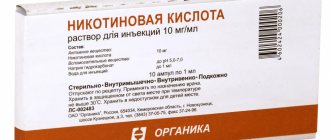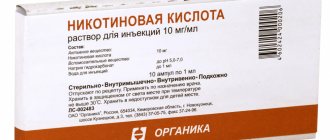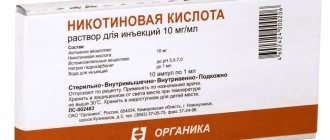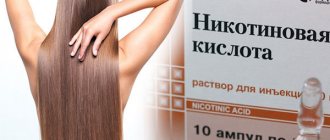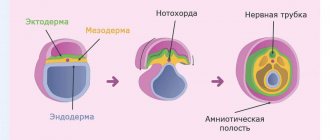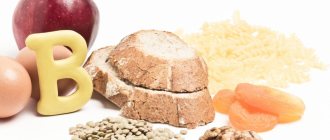Remember when we were scared as children that a drop of nicotine would kill an adult healthy horse? It was an unsuccessful attempt to explain that smoking is bad. But for many this information did not leave a response in the soul. A horse in a city is an almost fabulously rare creature. And a drop of nicotine seemed bad.
At a doctor’s appointment, you may find “nicotinic acid” in a set of prescriptions. The question arises: are nicotine and nicotinic acid the same substance or different? Maybe the doctor wants to harm us, not cure us?
Nicotine - what is it?
Most nicotine is found in tobacco.
Nicotine is a natural alkaloid. Contained mainly in green plants of the nightshade family.
The maximum concentrations of this substance are found in tobacco and shag. In the latter, the proportion of this alkaloid varies from 7 to 14%.
This substance is present in lower concentrations in tomatoes, peppers, and eggplants. Nicotine alkaloids are also found in coca leaves.
Nicotine is a powerful insecticide. And in the recent past, it was widely used to treat plants against pests. Currently, derivatives of this substance are used as insecticides.
Initially, tobacco was prescribed as a medicine for pathological headaches - migraines. Later, a mixture of natural alkaloids was obtained by sublimation. The organic extract was used in the treatment of asthma, inflammatory processes in the spleen, and to relieve epileptic seizures.
In appearance, nicotine in its pure form is an oily liquid. It is very hygroscopic and mixes with water in any proportions.
Other drugs
Also, drugs based on the active substance alirocumab can be used to reduce the level of low-density lipoproteins in the blood. It is created in laboratory conditions using the latest achievements of genetic engineering from cells of the human immune system. Alirocumab effectively reduces the level of low-density lipoproteins in the blood. The target of humanized monoclonal antibodies is the PCSK9 enzyme, which binds to LDL receptors on the surface of hepatocytes and promotes their degradation in the liver. Their action on this enzyme leads to a decrease in low-density lipoprotein cholesterol levels.
This drug is most effective in combination with statins. This substance is well tolerated by the human body and helps reduce the risk of overall mortality.
There is no drug that is suitable for absolutely everyone to lower cholesterol levels. A doctor should prescribe therapy with drugs with lipid-lowering effects. Treatment with such drugs usually lasts a long time, in some cases lifelong. It is not recommended to discontinue medications or change their dosage on your own.
The harm of nicotine
Nicotine is a very harmful substance.
Nicotine is a dangerous neurotoxin. When poisoned, it causes cardiac arrest and paralysis of the nervous system.
The average lethal dose for humans is in the range of 0.5–1 mg per 1 kg of body weight. That is, for a man weighing 75 kg, 35 to 75 mg of this alkaloid is enough. So, indeed, a drop of pure nicotine will kill not only a horse, but also an elephant.
When smoking leaves of nicotine-containing plants, physical dependence develops. Constant contact with an alkaloid provokes pathologies of the heart and blood vessels, oncopathologies of the respiratory system and oral cavity, inflammatory processes in the gums, and stomatitis.
Fibrates
Fibrates are the first effective hypotriglyceridemic drugs that began to be used for the treatment of atherosclerosis. There are two generations of this subgroup: the first includes clofibrate, which is currently not registered due to its low safety profile. There is evidence that long-term use of clofibrate increases mortality not associated with cardiovascular diseases, and also increases the risk of developing tumors of the digestive tract and liver [1].
Today, only second-generation fibrates with a favorable safety profile are used: fenofibrate, bezafibrate, ciprofibrate and gemfibrozil.
All second-generation fibrates are similar in effectiveness, but the drugs differ in pharmacokinetics. The longest-acting drugs are fenofibrate (20–25 hours) and ciprofibrate (more than 48 hours) [1]. However, the maximum clinical effect develops only after several weeks of use. So, for gemfibrozil this figure is at least 4 weeks.
The mechanism of action of fibrates is still not completely clear [5]. Recent studies indicate that many of their effects are associated with interaction with peroxisome proliferator-activated receptors (PPARs). They play an essential role in the regulation of gene transcription. Fibrates bind to PPARs, which are expressed primarily in the liver and brown adipose tissue, and, presumably, through PPAR-mediated stimulation of fatty acid oxidation, provide [4]:
- a 20–50% reduction in triglyceride levels is a class effect of fibrates;
- decrease in the level of VLDL, LDL;
- inhibition of cholesterol synthesis, which leads to a decrease in its level by an average of 10–15%;
- increase in HDL concentration (with prolonged use).
While taking fibrates, atherosclerotic plaques in the walls of blood vessels also thicken, which leads to an increase in their lumen. In addition, drugs in this group have an antiplatelet effect.
Fibrates are prescribed long-term, usually for several years.
Side effects
Adverse reactions when taking fibrates develop in 2–15% of cases. The most common dyspeptic disorders are nausea, diarrhea; skin reactions (rash). Drowsiness, impaired bile outflow, and myositis occur less frequently.
What should I warn the client about?
It is better to take fibrates in the morning during meals, since the synthesis of lipoproteins rich in triglycerides occurs more intensely in the morning.
A nicotinic acid. A little biology and chemistry
Nicotinic acid or vitamin PP - this substance takes an active part in metabolic processes in the body, regulates fat metabolism, and promotes the production of enzymes.
In its natural state it is found in bread, meat products, buckwheat, mushrooms, vegetables and fruits.
A lack of this substance leads to hypovitaminosis. In this case, pellagra develops. Without proper treatment, this disease ends sadly. In addition to vitamin deficiency, the following organs and systems suffer from a lack of vitamin PP:
- blood cell synthesis is disrupted;
- the production of bile and gastric juice decreases;
- hormonal imbalance occurs;
- neuralgia of various parts of the nervous system develops;
- impaired control of blood sugar and cholesterol;
- Pregnant women experience disturbances in the development of the nervous system of the unborn baby.
Side effects
In addition to all its positive effects, niacin has some negative features: to large doses, over 50 mg taken orally and from 10 mg intramuscularly or intravenously, the body can react with hyperemia and hyperthermia of the skin in the arms, legs, knees, head, neck and chest. . This phenomenon is associated with the release of histamine. To dampen this reaction, you need to take a quick-acting antihistamine. As a rule, there is no need to take them, since hyperthermia from the moment of its development goes away completely within half an hour, a maximum of an hour.
Before using niacin, it is recommended to consult a specialist, since it may be contraindicated for people with hypotension or low blood viscosity.
Nicotinic acid as a medical product
Nicotinic acid helps with liver inflammation.
Pharmacies offer nicotinic acid in ampoules for intramuscular injection and tablet forms in various dosages. Indications for use:
- pellagra;
- gastrointestinal pathologies - hypoacid gastritis;
- inflammatory processes in the liver;
- cirrhosis;
- spasm of blood vessels in various organs and systems;
- inflammatory processes in the peripheral nervous system;
- skin ulcers;
- trophic violations of the integrity of the skin;
- treatment of the consequences of toxic effects.
Vitamin PP is a vital compound, but there are a number of conditions for which it should not be used. Contraindications for use:
- individual intolerance;
- ulcer in the acute stage;
- increased blood pressure;
- liver diseases;
- heart rhythm disturbances;
- chronic inflammatory diseases;
- pregnancy;
- lactation;
- disorders in the circulatory system;
- neurotic conditions.
Effective dosages depend on the age and diagnosis of the patient. The drug is administered by drip, so intramuscular injections are painful. It is advisable to carry out the manipulation after eating. This will reduce the likelihood of developing unpleasant sensations of itching and heat. Effective dosages for various diseases:
- coronary disease, stroke - once a day at the rate of 1 ml of the drug per 10 ml of saline - a course of 10 to 15 droppers;
- pellagra - the dosage is the same, but 2 droppers are indicated per day, and the duration of treatment is from 15 to 20 days.
Other drugs containing vitamin PP are indicated for the treatment of children. But if there is no alternative, then nicotinic acid is prescribed in an amount of no more than 20 ml per day. An excess of vitamins is just as dangerous as their deficiency. In addition, medications can cause unpleasant side effects. Adverse reactions of nicotinic acid:
- allergic reactions;
- paresthesia;
- dizziness;
- numbness in the limbs;
- Redout;
- skin hyperemia;
- if the speed of drug administration is not observed, blood pressure sharply decreases;
- feeling of heat.
These phenomena do not require the intervention of medical personnel and go away on their own. There are tablet dosage forms of vitamin PP. Indications, contraindications and side effects are similar to the solution for infusion. Only effective dosages change:
- pellagra – 100 mg 4 times a day – course up to 20 days;
- other diseases – 50 mg 4 times a day.
This vitamin is included in many multivitamin complexes.
Publications in the media
Vitamin PP (vitamin B3, niacin, nicotinic acid, nicotinamide) is a water-soluble vitamin found in meat and fish products. Found in most foods containing vitamin B1. With severe food deficiency, pellagra develops. Endemic to some areas of Africa and Asia, sporadically found everywhere.
Sources of the vitamin are meat, liver, kidneys, milk, fish, yeast, vegetables, fruits, buckwheat.
Physiological role. Nicotinic acid amide is a prosthetic group that is part of NAD and NADP. NAD and NADP are hydrogen and electron acceptors and participate in redox processes, i.e. take part in cellular respiration.
Daily requirement • For adults — 18–24 mg • For children •• 6 months–1 year — 6 mg •• 1–1.5 years — 9 mg •• 1.5–2 years — 10 mg •• 3–4 years - 12 mg •• 5-6 years - 13 mg •• 7-10 years - 15 mg •• 11-13 years - 19 mg.
VITAMIN PP DEFICIENCY
Causes • Primary - lack of incoming food, for example, when corn predominates in the diet, since vitamin PP, although contained in it, is in a bound state and is not assimilated in the gastrointestinal tract. In addition, corn proteins are poor in tryptophan, which is used in the body for the synthesis of endogenous vitamin PP • Secondary - due to impaired absorption or assimilation of vitamin PP, as well as an increase in the need for it •• Prolonged diarrhea •• Liver diseases (most often cirrhosis leads to deficiency) • • Alcoholism •• Parenteral nutrition without sufficient replacement of vitamins •• Malignant carcinoid tumors (increases the need for tryptophan) •• Diabetes •• Hartnup's disease.
Clinical picture. Vitamin PP deficiency causes dysfunction of the skin, mucous membranes, gastrointestinal tract and central nervous system. Characterized by the presence of three Ds (dermatitis, diarrhea, dementia) and damage to the mucous membranes.
• Stage of prehypovitaminosis - nonspecific disorders (weakness, fatigue, loss of appetite, etc.).
• Stages of hypo- and vitamin deficiency •• Dermatitis. Skin lesions can be of four types. Most often it is symmetrical and occurs on areas of the skin exposed to solar radiation or trauma (pressure) ••• Skin manifestations in the form of pellagritic erythema occur acutely, followed by the formation of blisters, blisters, and crusts. A secondary infection is often associated ••• Damage to skin folds - redness, maceration, erosion and the addition of a secondary infection ••• Chronic hypertrophic changes - the skin thickens, loses elasticity, becomes folded. Marked pigmentation is noted in open areas of the body and in places subject to pressure. The lesions have a clear boundary and are surrounded by a border of recovering epithelium ••• Chronic atrophic changes in the skin with loss of elasticity and peeling. Characteristic of long-term forms of pellagra •• Damage to the mucous membranes primarily affects the oral cavity, although the mucous membranes of the vagina and urethra may be involved ••• Acute failure is characterized by glossitis and stomatitis, and the tongue becomes bright red in color. Initially, the tip and edges of the tongue are involved in the process, as well as areas of the mucous membrane surrounding the outlet of the Stenon's duct ••• Gradually the entire mucous membrane is involved, the tongue becomes painful and swollen, hypersalivation occurs ••• In the later stages of the disease, a characteristic picture of a lacquered tongue appears ( bright red tongue with a smooth surface due to atrophy of the papillae) ••• Ulcers may appear on the mucous membrane of the floor of the mouth, lower lip, and also opposite the molars •• Diarrhea is the most characteristic sign of dysfunction of the digestive system. Gastrointestinal tract involvement occurs in the later stages of the disease. Characterized by the appearance of a burning sensation in the mucous membrane of the oral cavity, pharynx, esophagus; gastric dyspepsia occurs in the form of nausea, less often vomiting, which is caused by atrophic changes in the gastric mucosa and the occurrence of achylia. Possible diarrhea alternating with constipation. A severe course is indicated by diarrhea streaked with blood as a result of the formation of erosions and ulcers of the intestinal mucosa •• Dementia is the most striking sign of damage to the central nervous system; may be accompanied by organic psychosis and/or encephalopathic syndrome. In the early stages, irritability appears, signs of polyneuritis are possible ••• Organic psychosis is manifested by hallucinatory-paranoid, affective symptoms, psychomotor agitation ••• Encephalopathic syndrome, characterized by blackouts, hypertonicity of the muscles of the limbs, the appearance of uncontrolled sucking and grasping reflexes •• In the later stages, they are impaired functions of the endocrine system, hypoproteinemia occurs.
Diagnosis • Urinary excretion of N'-methylnicotinamide less than 4 mg/day • Decreased nicotinic acid levels • Decreased levels of other B vitamins in the blood and urine.
Differential diagnosis - other causes of stomatitis, glossitis, diarrhea, dementia. When signs of central nervous system disorders appear, it is necessary to differentiate from those with vitamin B1 deficiency.
Treatment • In moderate and severe cases, hospitalization is necessary • Diet. Inclusion in the diet of foods rich in vitamin PP (meat, eggs) and tryptophan (milk) • Prescription of nicotinic acid (or nicotinamide) from 300 to 1000 mg/day orally at the beginning of treatment with a marked decrease in the content of vitamin PP in the blood plasma, then 300 –500 mg • For gastrointestinal diseases, nicotinic acid (or nicotinamide) is administered parenterally (50–100 mg IM 2–5 times a day or 25–100 mg IV) • At the same time, 5 mg of thiamine, riboflavin and pyridoxine are prescribed • Caution should be exercised when using nicotinic acid with concomitant glaucoma (possible exacerbation), gout (large doses cause hyperuricemia), liver pathology (large doses can have a hepatotoxic effect), arterial hypotension (due to the vasodilator effect of the drug), peptic ulcer (possible exacerbation ) • To reduce the side effects of nicotinic acid (redness of the face and upper half of the body, dizziness, rash), it is recommended to start treatment with low doses of the drug and gradually increase them, and/or take nicotinic acid orally after meals or with milk. Tolerance to the vasodilatory effect of nicotinic acid usually develops within the first 2 weeks • Nicotinamide, unlike nicotinic acid, does not have a vasodilatory effect.
The course is usually progressive.
Prevention • Nutrition with sufficient dietary content of foods rich in nicotinic acid • In the endogenous form - timely diagnosis and treatment of diseases that impair the absorption and assimilation of vitamin PP, prophylactic administration of nicotinic acid preparations; additional administration of vitamin PP to persons with an increased need for it.
Synonyms • Asturian rose disease • Rose disease • Pellagra • Lombardy pellagra • Scorbutum alpine
ICD-10 • E52 Nicotinic acid deficiency [pellagra]

